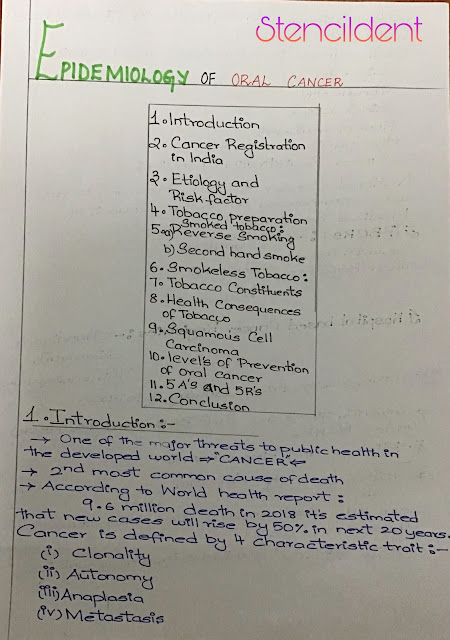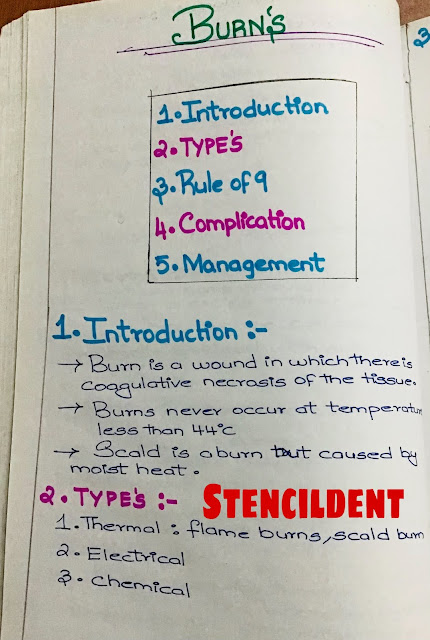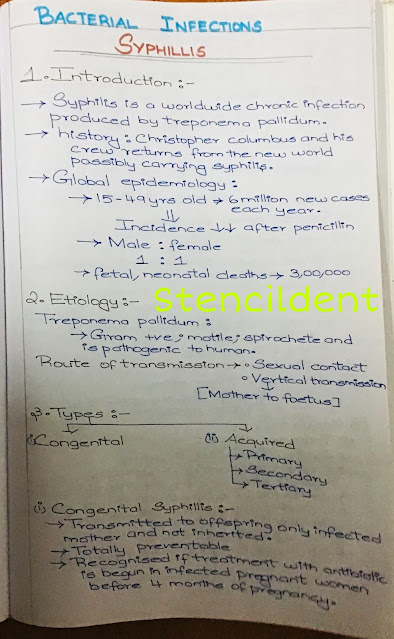Epidemiology of oral cancer

EPIDEMIOLOGY OF ORAL CANCER INTRODUCTION: One of the major threats to public health in the developed world-cancer 2nd most common cause of death According to world health report :9.6 million death in 2018 its estimated that new cases will rise by 50% in the next 20 years . Cancer is defined by 4 characteristic trait: Clonality Autonomy Anaplasia Metastasis International classification of disease (ICD) WHO (9TH version) Oral cancer is classified under rubrics Lip-140 Tongue-141 Gingiva-143 Floor of mouth-144 Other parts of mouth-145 CANCER REGISTRATION IN INDIA: National cancer registry program(NCRP)was commenced by Indian council of medical research 3 (PBCRPS ) Population based cancer registries : Bangalore Chennai Mumbai 3 Hospital based cancer registries : Chandigarh, Dibrugarh, Thiruvanthapuram Commenced from January 1 in 1982 Currently there are 36 (PBCRS) and 236 (HBCR) under NCRP. ETIOLOGY AND RISK FACTOR : To...





